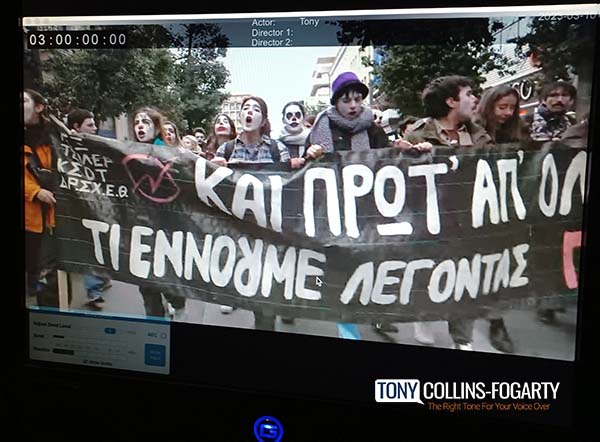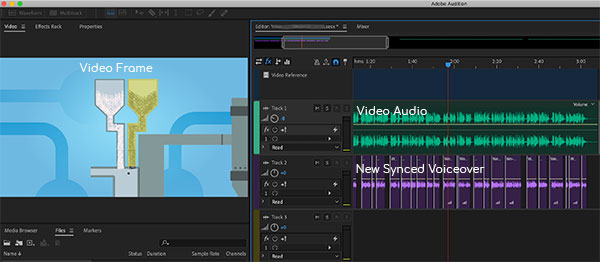A British voice-over artist for your dubbing and localisation needs.
I am an experienced British voice-over artist and often I work with overseas clients seeking to localise or dub content they have already made in their native language.
Localisation vs Dubbing – What is the difference?
In general terms, localisation is about replacing the original dialogue with the new language. To the viewer or listener, it appears to be simply content in that language. They will not be aware that it has been re-purposed into another language.
When it comes to dubbing, it may replace the original dialogue entirely, or if adopting “UN-Style dubbing”, the original audio is heard in the background at a lower volume. This is often the case when translating an interviewee who appears on-screen, where it is essential to know who is saying the words.


Live-To-Picture Dubbing, Time-synchronised voice-over, or “In the Wild”?
I have experience and am equipped to do all of these techniques.
Live-to-picture is when the session is recorded live and video with a timecode is used as a reference for the voice-over artist. Each segment is recorded whilst the video is in playback so that the voice-over can perfectly match what is being said to time.
Time-Synchronised Voice-over is generally where a voice-over artist works either to the timecode references provided or in some cases video. I work with video in my studio and can match the voice to it if supplied in an .mp4 format.
“In The Wild” voice-over is recorded at its own pace and timing. This is where you might be recycling the assets and other elements of a video, but into a new version. Syncing is not important here, but natural pace might be.
Some Typical Use Cases for Localisation.
A typical localisation example might be a French international company, which has produced training videos in French, but now needs them to be repackaged for English-speaking staff in other parts of the world.
I can help in this localisation process. Your specific requirements will shape how the audio is recorded and produced.
Some projects may simply need an English “in the wild” recording. For others, a time-synced voiceover may be needed.
Localisation might also be desirable where you are producing content in different markets and want brand-consistency across content, or to share costs on production.
Live dubbing sessions
For some projects I work remotely with post-production studios and voice live-to-picture. This is where the producing studio has a video already produced and needs either a replacement voice in English or a “UN Style voice-over” to be dubbed over as a translation.
I have a monitor in my booth, so with the right setup, such as ipDTL (with remote video), we can work together to get the delivery and timing just right. If you use other software for this process, let’s have a chat.
Time-synchronised voice-over
If you need a time-synchronised voice-over I can work un-directed with your content and provide an English voice-over to match and slot straight into your video timeline.
If you wish to synchronise a voice with existing content, please let me know before recording. If you provide an mp4 version of the original content along with both scripts, then I can work with the video in my own production software to get a perfect match.
This will save your producers or editors time when assembling the new English version of the content.
I am always happy to discuss these ideas with you, to get the perfect result for your project. Don’t hesitate to ask me if you need reassurance on any particular point.
Related: What is a UN Style Voice-Over?

